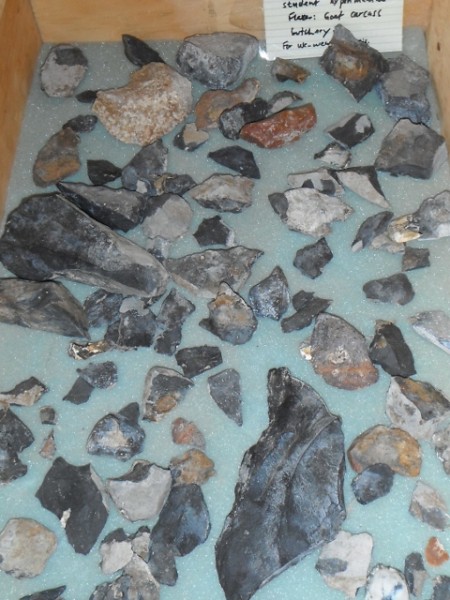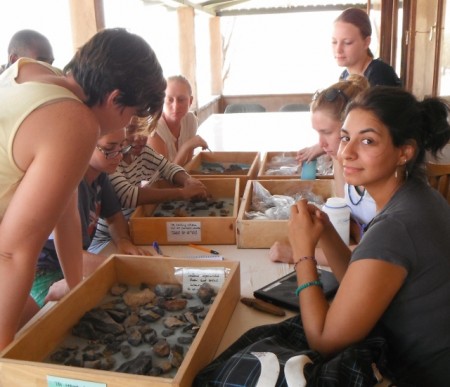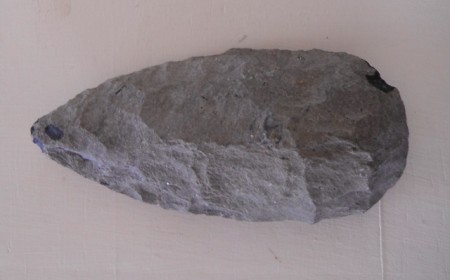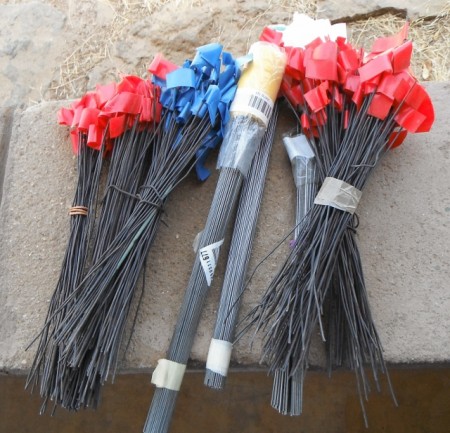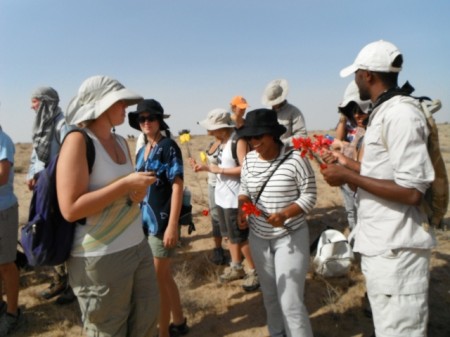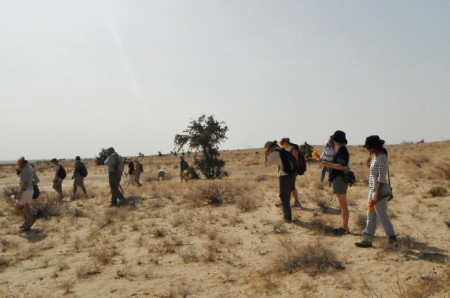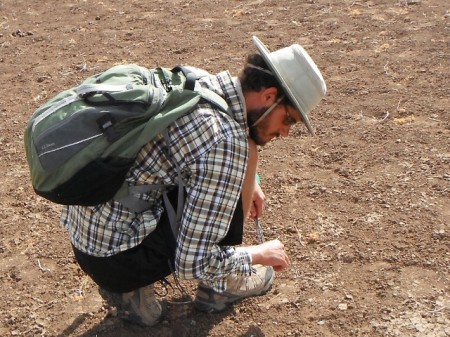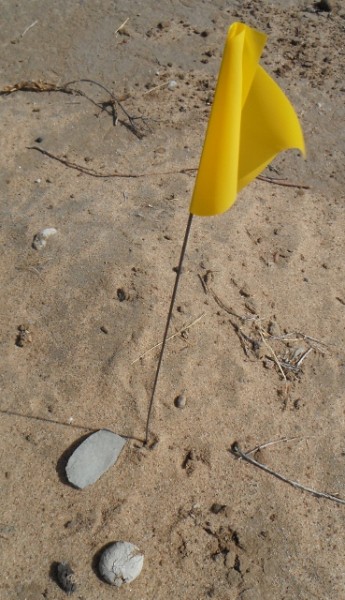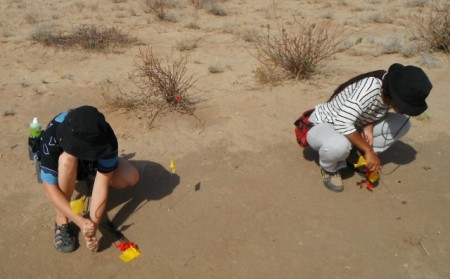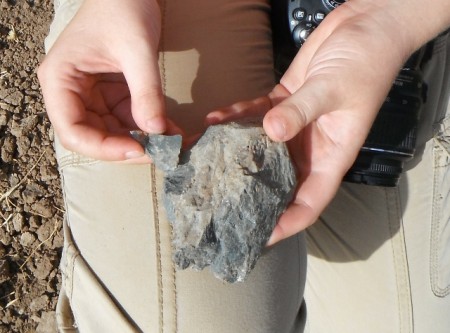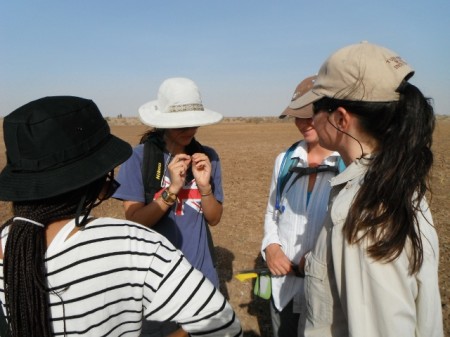Students continued to learn more about stone tools – what they look like, their purpose, and how they were made. In the early stages, starting maybe about 3 million years ago, humans made tools by breaking up stones. The sharp edges flakes were used as knives, whereas others might have been used to crush or chop foods. These types of tools are referred to as “Oldowan”. Starting around 1.76 million years ago, stone tools are more sophisticated. Typical of those times is the hand-ax which can take 8 hours to make. The tools of this type and time are referred to as “Acheulean”. To develop an eye for finding stone tools, instructor Dr. Sonia Harmand took the students to a site where Holocene (made during the past 12,000 years) stone tools are found on the surface. Students surveyed the area and put a little flag next to any stone they thought might be a manufactured tool or a byproduct thereof. This was an exciting expedition because all students found many, many stone tools!

